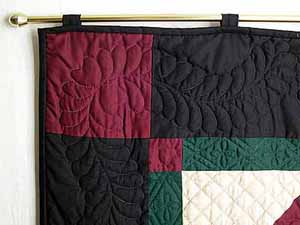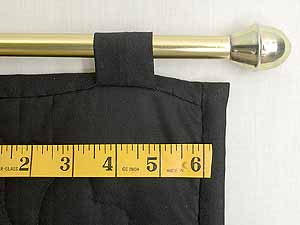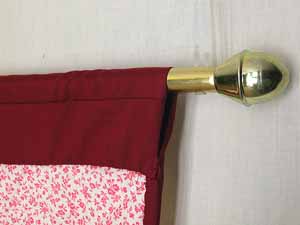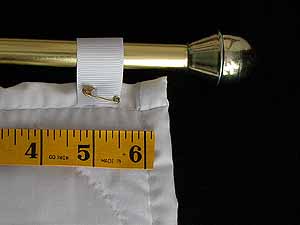Where is “Amish Country”?
We define Amish Country as the geographical area surrounding Lancaster, Pennsylvania and including the neighboring counties. Most visitors to this area go away with pleasant memories of Amish buggies and farmers plowing fields with mules, instead of tractors.
The traditions and life style of the Amish community have a positive influence on all who live here. Their successful long term commitment to their families and the land they farm, their modesty, and their avoidance of technology shows that there is an alternative to the way most of us live.
But there is more to this area than the Amish. Many Scots, Germans, Welsh, French and English were also in the first waves of immigrants that came to Lancaster. During colonial days Lancaster’s ethnic and religious diversity fostered a tolerance and harmony forged out of necessity, making a united effort against the relentless frontier. But the diversity remained and flourished with vigor and richness.
Each of these early groups of immigrants brought cultures,traditions and skills that continue to influence their kin to this day. This vigorous rich diversity is reflected in our artists and artisans.
For more information on things to do and see in and around the Pennsylvania Dutch Country and Lancaster County contact the Pennsylvania Dutch Convention & Visitors Bureau toll-free at 1-800-PA-DUTCH. And don’t forget to ask for your free copy of the Pennsylvania Dutch Country Map And Visitor’s Guide when you call!
What is a Quilt?
Quilts are the biggest pieces of art most people can put in their homes. They can be bright and bold, soft and subtle, traditional, or avant-garde. In any event, the first reaction to a well designed quilt is WOW!
What’s more well designed, hand-made quilts are amazing bargains. Today, quilters in Pennsylvania earn less $2.00 per hour for their work. Hopefully, with the demand for such good quilts increasing, their earnings and the price of their quilts will rise.
Quilting is centuries old, and involves simply running stitches to anchor a soft filler between two layers of fabric. These stitches traditionally follow a systematic pattern to create a subtle textured fabric surface. The quilting pattern alone is, typically, the only source of decoration on the back-side of an Amish or Mennonite style quilt. The top fabric layer of an Amish or Mennonite style quilt is normally a patchwork, and may include appliqués. Part of the challenge of designing a quilt is the melding of the design of the patchwork (and/or appliqués) with the pattern of quilting stitches.
The traditional quilting block patterns (Log Cabin, Lone Star, Bear’s Paw, etc.) are used alone or in combination to make Amish or Mennonite style quilts.
What is an Amish Quilt?
There are a variety of definitions of what makes a quilt, an Amish Quilt.
- For many people, an Amish quilt is any quilt that uses any combination of the traditional quilt block patterns and only uses solid dark fabrics ranging in color from red to blue to green on the color wheel.
- For some others, Amish quilts encompass all quilts that Old Order Amish use in their homes. This broadens the first definition to include Amish “summer” quilts that typically have a white background and a traditional block pattern made with solid color fabrics ranging from red to green.
- Another definition, is that an Amish quilt is any quilt made by Old Order Amish ladies (Amish men do not make quilts). Amish ladies make quilts with printed and solid fabrics, and traditional block patterns as well as non-traditional designs. Most of the quilts that they make to sell would not be appropriate for them to use in their own homes. A little broader version would include quilts made by Mennonite ladies as well.
- A much broader variation of this last definition: An Amish quilt is any quilt that is similar to the quilts made by Amish and Mennonite ladies.
While all these definitions have merit, we use the first definition here. Where appropriate though, we may say that a non-Amish quiltincorporates Amish colors, or a traditional Amish block pattern.
What do you mean by the term “hand-made quilt”?
We use the term “Hand-made Quilt” here to mean: that the quilt is special, usually it is one of a kind (sometimes a quilter will make 2 or 3 of the same design with the same fabrics); that the quilt patchwork is cut by hand and then usually sewn together on a simple non-electric sewing machine; and that the quilting stitches are all sewn by hand. The method and tools used by our Amish and Mennonite quilters are essentially the same their great grandmothers used in 1900. About hundreds of hours of effort goes into such a handmade quilt. Most quilters make only two per year.
Because they are not mass produced, Hand-made quilts vary greatly in quality, complexity and price.
Manufactured copies of Amish quilts are widely offered for sale. These quilts differ from the quilts offered here in that, they are much less expensive, and that they are not in any sense unique. In some cases, these manufactured quilts, have their patchwork design printed on the fabric rather than the patchwork being cut and then pieced together, and the quilting is done by machine, rather than by hand. In other cases, these “copy” quilts simply suffer from low quality stitching.
How can I judge the quality of a hand-made quilt?
Most handmade quilts, that are offered for sale today, are not of good quality. In part, this is because the demand for quilts is far greater than what can be met by the diminishing number of experienced quilt-makers. In part, it is because many people will pay just as much for a quilt that is poorly designed and sewn as they will for one that is well designed and finely sewn. Surprisingly, it’s easy to recognize a good quality handmade quilt. Most individuals just don’t have any idea of what to look for.
It is difficult to design a quilt. The choice of patterns, fabrics, and proportions is daunting, and a quilt can be ruined by the inclusion of a fabric in the design with just slightly the wrong hue. Most quilt-makers are far better at sewing than they are at design. Consequently, look critically at how the fabrics in the quilt play off against each other. If it doesn’t look good to you, it isn’t good!
Keeping all the pieces of a traditional patchwork in alignment is a challenge to the the quilt-maker. Any misalignment of more than an eight of inch indicates an inferior quilt. Look closely. If there are flaws it won’t take long to see them.
It has got to be enticing to a quilt-maker to cut back on the density of the quilting pattern. The hand sewing of this pattern is by far the biggest cost of making a handmade quilt, anything that can be done to cut back on the sewing will reduce the cost (but not necessarily the price!) of a quilt. The purpose of the quilting stitches is to hold the batting material and two outer fabric layers together. On average, within each square foot of a good quilt there should be at least 90 linear inches of quilt stitching (if a crosshatch pattern was used for the quilt stitching, the crosshatch squares should be no more than 3 inches on a side). Where one quilting patterns stops and another starts, the designer sometimes leaves small areas without any quilting stitching. In a good quilt, there will be only a few areas where there are gaps in quilting larger than a fist. Before you buy a quilt, look at the back of it (where the quilting pattern is most apparent) and confirm that you are getting your money’s worth.
The quilting stitches in a well made quilt will be the same size and evenly spaced (about 6 to 8 stitches per inch). A good quilt will have over 50,000 stitches, so some quilt-makers feel an economic incentive to make bigger (and consequently fewer) stitches. Uneven stitching is the mark of an inexperienced or sloppy quilt-maker. Again, the quality of the stitching is usually best seen on the back of the quilt.
All the quilts offered for sale here meet these standards.
How should I care for a quilt?
Always remember and respect the hours of work that went into the making your quilt. To assure long life for your quilt, proper care is essential.
Wash or Dry Clean?
Most quilt lovers prefer to wash rather than dry clean their quilts. But some quilts can not be safely washed. If a quilt has loose lace or puffy applique work, machine washing is very risky and the quilt should be professionally dry cleaned. Also, while all of the fabrics used in quilts are supposed to be color fast, sometimes a fabric that will run is mistakenly used. Look out for fully saturated dark colored fabrics and hand-dyed ones as they the ones are most likely to run. Before washing, test the suspect fabric by rubbing it with a piece of white cotton moistened with very hot water. If the color transfers to the white cotton, don’t wash the quilt — even in cold water. Instead, get the quilt professionally dry cleaned. If you must dry clean your quilt be sure to air it (outside if possible) before using it.
Washing
It is generally fine to wash your quilt in a home washing machine, though for a very large quilt you may need a commercial size machine. To wash a quilt, use cold water and a mild detergent(that is free of perfumes, brightners, and bleach). Run the machine on a short gentle cycle. To keep the colors bright, add half a cup of vinegar to the wash cycle.
Drying
Quilts are heavy when wet. Try to support its wet weight so that the threads don’t pop. It is OK to partially dry a quilt in a dryer, but it is best to lay a quilt flat on rack to dry. Some people like to finish drying their quilt out on the grass on a sunny day! Do not iron your quilt.
How Often?
Washing or dry cleaning a soiled quilt will extend its life; washing or dry cleaning a clean quilt will shorten its life. Quilts that are used every day normally only need washing once a year. But if you have pets or children, more frequent washing may be desirable. Airing quilts (on a drying rack outside) between washings is a good practice.
Quilting Marking
On a new quilt you may note white or gray lines running through the quilting. These quilting markings are part of the process quilters use here to make sure the quilting is properly applied to the quilt. If a line is white, it is probably chalk and can be brushed off or easily removed with a damp cloth. Also the first time your quilt is washed or dry cleaned the chalk marks will disappear. If the lines are gray they were probably made with a pencil and can be removed with a gum eraser. Quilting marking is part of the craft of Lancaster quilts.
Storing
When not in use your quilt should be stored in a dry, dark location in a cotton or muslin bag — never store your quilt in a plastic bag or cardboard box. For wall hangings a cotton pillow case should be used. Be sure the quilt is clean before you store it away. Every other month or so it is a good idea to take the quilt out and refold it another way before putting it back in the bag. When you take your quilt out of storage, air it out. Lay it on the grass and let the sun penetrate it, or tumble it in a cool dryer for a short time.
Minor Repairs
Before washing or dry cleaning your quilt it is wise to inspect your quilt for seams that have come loose and repair them prior to the washing or dry cleaning.
What size quilt should I buy?
To select the right size quilt, you need to consider four factors. The most obvious is the size of your bed, a King size bed requires a bigger quilt than the quilt that would be used on a Full size bed.
The second factor is the length of the drop. The drop length (overhang) is a matter of taste and practicality. The most common drop choices are:
- Full Length Quilt (drops to 1/2″ of floor),
- Blanket Size Quilt (drops to 1″ below box spring), or
- Coverlet Size Quilt (drops to 3″ below mattress).
Usually, quilts for King and Queen size beds fall between Coverlet and Blanket size. A bed skirt is used to cover the box spring when a quilt close to Coverlet size is used.
The third factor is the style of your bed. Most beds today do not have Footboards, so there must be a drop on the sides and the foot for these beds. If your bed has a footboard, you only need a drop on the sides.
The final factor is the treatment of your pillows. Most people like to cover their pillows with the quilt. To do this, an allowance for a “pillow tuck” of 10″ to 18″ is required depending on the thickness of the pillows. Many people, alternatively, use pillow shams (decorative pillow covers) eliminating the need for the “pillow tuck” allowance.
In considering the right quilt size, bear in mind that hand quilted quilts are quilted on a quilt frame. In Lancaster, Amish women use frames which are typically 110″ to 116″ wide. While it is possible for a quilt to be made upto 120″ long, a quilt can not be wider than the quilt frame used in making it.
Some quilts can be used either lengthwise or width-wise. Some can’t. Many quilts have a special design on the head where the pillows are expected to be, or the quilt design includes elements (for instance a large heart) that demand that the quilt be used in a single orientation. Other quilts are symmetrical and can be used in either orientation.
Be careful when looking at the dimensions of non-symmetrical quilts. The length of a non-symmetrical quilt made for a King size bed will be smaller than its width. For Queen and Full size beds, the length will be larger than the width.
Many applique quilts are designed to be specifically used on queen size beds and even though some of these may be big enough to be used on king size beds, they won’t look good when so used.
How do I hang a wall hanging?
Step 1 — Choose a location
We find it is best to choose a location;>
- Brightly lit, but not in direct sunlight
- On a wall that contrasts in shade and/or color with the wallhanging
- Where the wall hanging can be seen from a distance and up close
- Away from heat or air conditioning ducts
Some suggestions:
- On a foyer wall
- On a wall near your dining or kitchen table
- On the wall behind a sofa
- On the wall above a bed’s header board
Step 2 — Choose hanging treatment
Rectangular wall hangings can be hung using decorative rods (where the rod is intended to be seen), or hung so that only the wallhanging is seen. The choice is personal and is certainly influenced by the style of your home’s decor.
Most non-rectangular wall hangings (such as double wedding rings) cannot be hung with rods.
Specialty quilt hangers can be used for hanging wall hanging size quilts, but while these devices are good for hanging large quilts, they are not needed to hang small quilts. They tend to hide the top couple of inches of the quilt they are holding, which isn’t a problem with a bed quilt, but can be with a smaller quilt. They are also much more expensive than using a rod.
Step 3a – Hanging with a rod
Hanging rods can be purchased at any store that sells drapery hardware (building supply stores, department stores, drapery shops).Ask for cafe rods. Adjustable length metal rods with various finishes are available and range in price from less than $10 to as much as $30. Wooden drapery poles can also be used, which are available in a variety of finishes with decorative finials (the fancy end-pieces). These finished rods come with mounting hardware. If you are so inclined, you may wish to make and finish your own rod by purchasing a dowel rod (about1/2 inch diameter) and finials.
Many of our wall hangings include sleeves or tabs for hanging rods. The photos below show the difference between tabs and a sleeve.


With tabs the entire length of the rod is visible

With a sleeve, only the end of the rod is visible
If your rectangular quilt was not made with tabs or a sleeve, we can arrange for tabs or a sleeve to be added to your wall hanging before it is shipped (it typically will delay shipment by two days and add $10 to $20 to the price). If you desire that this be done, add a note to the Customer Comments section of the order form.
You, of course, may add your own tabs to a wall hanging, if you are not comfortable with sewing you can add tabs made from fabric ribbons (one inch wide andthree inches long) attached to the back of the wall hanging with safety pins as shown below.

Step 3b – Hanging without a rod
Believe it or not, the Amish solution is Velcro! Velcro is available at most fabric stores and hardware stores. Velcro self-adhesive Velcro tabs (or strips) can be attached to the top back edge of your wall hanging (with the adhesive, or hand sew, or if you prefer with straight pins).

The corresponding Velcro tabs can be directly attached to the wall. Alternatively, for a rectangular wall hanging, the tabs can be attached to a wooden strip and the wooden strip hung on the wall with a nail. The strip should be approximately2 inches wide, 1/2 inch thick, and long enough to reach across the back of your wall hanging and long enough to reach across the back of your wall hanging.
Where can I find patterns for your quilts?
Quilt patterns for many of the quilts shown here are commericially available. Some of the designs have been created by local women for their exclusive use and commercial patterns are not available.
While we do not sell quilt patterns, there are many sources for quilt patterns on the web. When specifying a pattern bear in mind that the names of quilt patterns are not standardized — you will find that many different quilt patterns have the same name, and many quilt patterns have several different names.What’s more as quilts are laid out a particular design may modified by the quilter to adjust its size.
Here are links to some sources of popular quilt patterns:
- Heart of Roses — Greatbook written by C Jean Horst that provides instructions for this wonderful quilt.
- Bargello Rhapsody Quilts — Written by Marge Edie
- Country Bride Quilts — Written by Craig Heisey and Rachel Pellman
- Dahlia Quilts — Written by Cheryl Benner
- Mariner Compass Quilts — Out of print but still available at used book stores.
- Amish Bed Quilts — Written by Rachel Pellman and includes the following patterns:
- Center Diamond
- Sunshine and Shadow
- Bars
- Multiple Patch
- Irish Chain
- Log Cabin
- Double T
- Stars
- Jacob’s Ladder
- Baskets
- Fan
- Ocean Waves
- Roman Stripe
- Tumbling Blocks
- Rail Fence
- Bow Tie
- Robbing Peter to Pay Paul
- Shoo-Fly
- Monkey Wrench
- Carolina Lily
- Crown of Thorns
- Bear Paw
- Pinwheel
- Garden Maze
- Railroad Crossing
- Double Wedding Ring
- Diagonal Triangles
- Drunkard’s Path
- Tree of Life
- Bachelor’s Puzzle
- Rolling Stone
Small Amish Quilt Patterns (crib and wall size) – Written by Rachel Pellman. Includes patterns for the same quilts as listed above.

You must be logged in to post a comment.